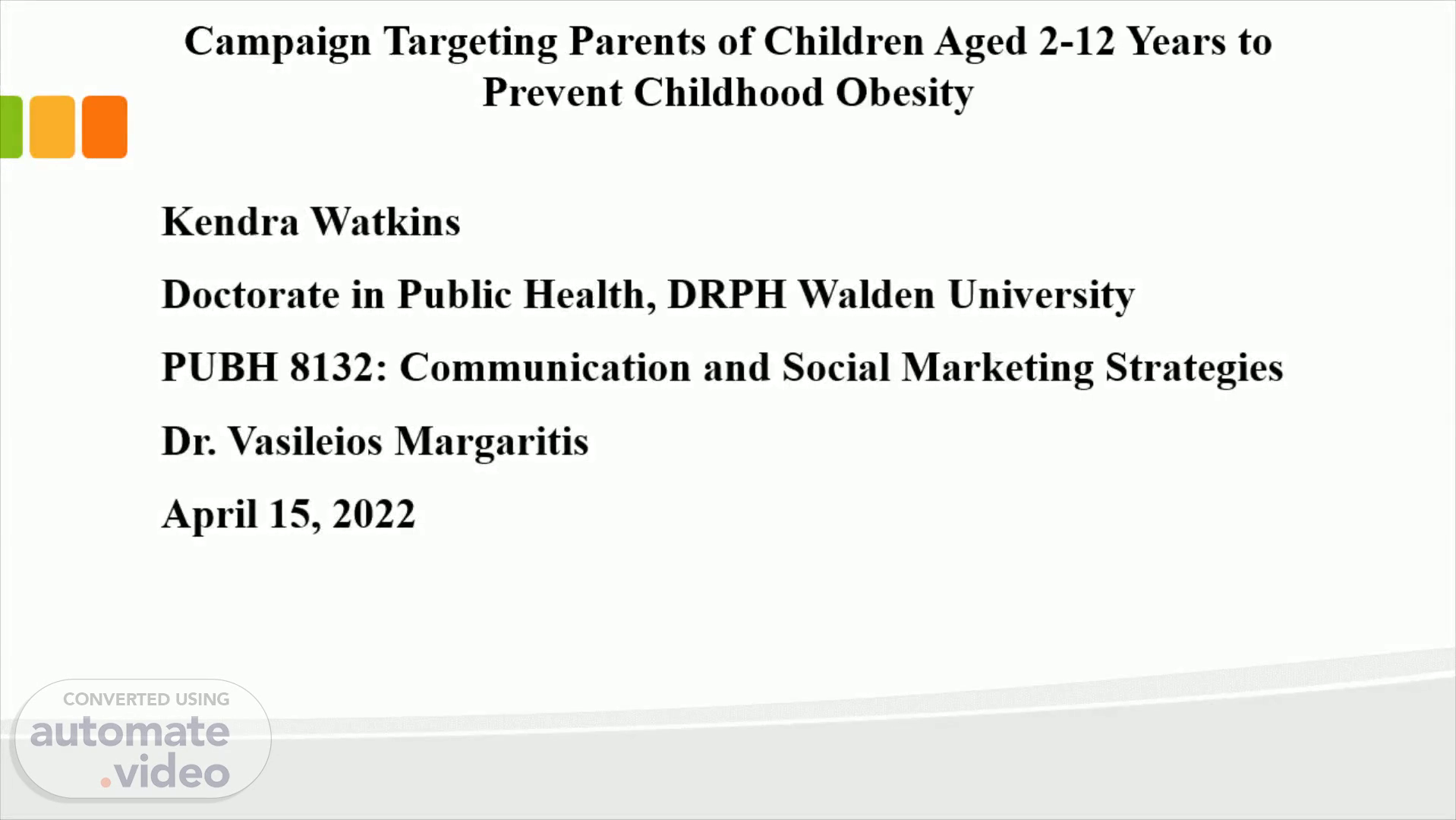
Campaign Targeting Parents of Children Aged 2-12 Years to Prevent Childhood Obesity
Scene 1 (0s)
Campaign Targeting Parents of Children Aged 2-12 Years to Prevent Childhood Obesity.
Scene 2 (14s)
HEALTHY EATING PLATE. PREVENTION OF CHILDHOOD OBESITY.
Scene 3 (17s)
TARGET POPULATION. The campaign targets parents of children aged 2-12 years to prevent childhood obesity in Durham County in North Carolina. I selected this population because parents are the primary agents of change in preventing childhood obesity and they are primarily involved in the growth and development of the child. Parents are in a position to adequately adopt, implement and model healthy behaviors that are likely to prevent childhood obesity successfully. The target Population can purchase and prepare healthy meals with adequate calories and nutrients for their children. Parents are also valuable for providing nutrition education to their children, thus encouraging healthful food selection..
Scene 4 (19s)
PREFFERED ACTION. The campaign will focus on actions that parents can incorporate into daily family life to help in tackling behaviors associated with excess weight. The campaign will highlight essential actions to parents of children aged 2 to 12. They include: managing treated foods, reducing time spent on screen, encouraging more physical activities, understanding and putting in practice age-appropriate portion sizes for children, encouraging more sleep, and replacing sugary foods and drinks with healthy meals..
Scene 5 (22s)
BENEFIT OF THE ACTION. Benefits of behavior change among parents for children of age 2 to 12 is that it helps them focus on good health for their children and not a particular weight goal. This allows the target population to establish healthy and nutritious daily meals and snack times and frequently eat together with their children..
Scene 6 (25s)
Healthy Eating Mobile App. RUN HEART RATE 128 LEVEL.
Scene 7 (28s)
Examples of Healthy Eating Plate.
Scene 8 (30s)
Example of Healthy Eating Plate.
Scene 9 (33s)
References. Parvanta , C., Nelson, D. E., & Harner , R. N. (2018). Implementing a communication intervention. P ublic health communication: Critical tools and strategies (pp. 315–368). Jones & Bartlett Learning. Brownson , R. C., Tabak , R. G., Stamatakis , K. A., & Glanz , K. (2015). Implementation, dissemination, and diffusion of public health interventions. In K. Glanz , B. K. Rimer , & K. Viswanath (Eds.). Health behavior: Theory, research, and practice (5th ed., pp. 301–326). Jossey -Bass. Hoffman, J. L., & Cowdery , J. E. (2021). Interprofessional collaboration in public health. Nursing Education Perspectives, 42 (1), 46-48. https://doi.org/10.1097/01.NEP.0000000000000591 Plamondon , K. M., Caxaj , C. S., Graham, I. D., & Bottorff , J. L. (2019). Connecting knowledge with action for health equity: A critical interpretive synthesis of promising practices. International Journal for Equity in Health , 18 . https://doi.org/10.1186/s12939-019-1108-x.